USS Gerald R. Ford (CVN 78). © MC2 Ridge Leoni / US Navy / AFP
The USS Gerald R. Ford has finally taken to the sea after a series of costly and time-consuming setbacks. Here are five things you probably did not know about the aircraft carrier.
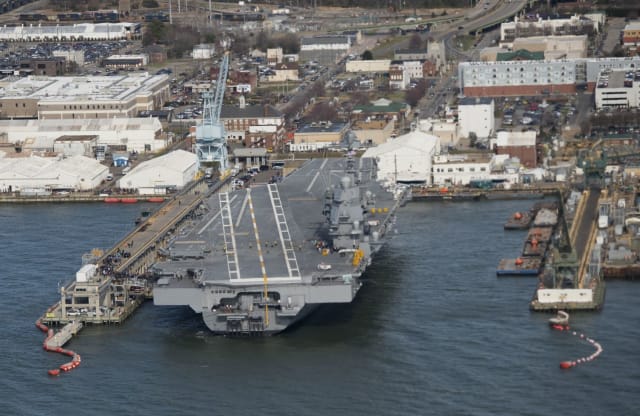
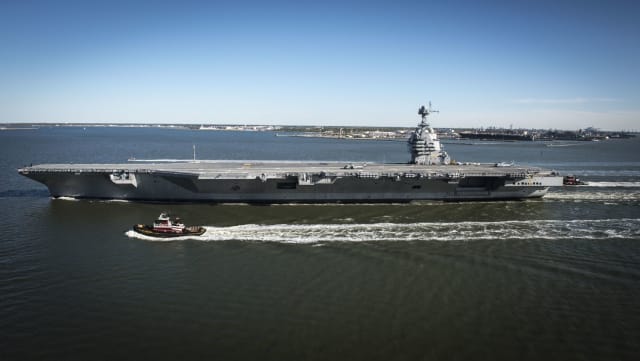
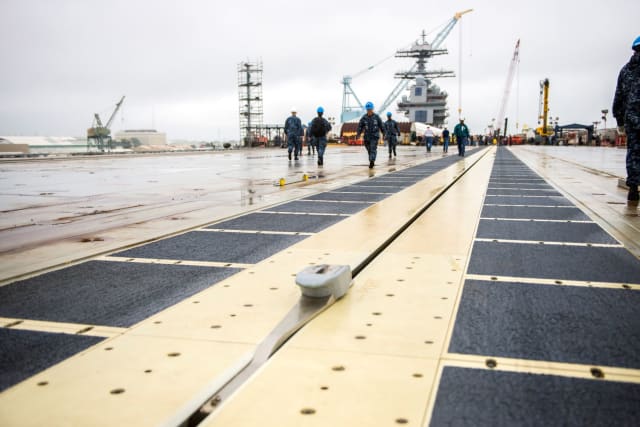
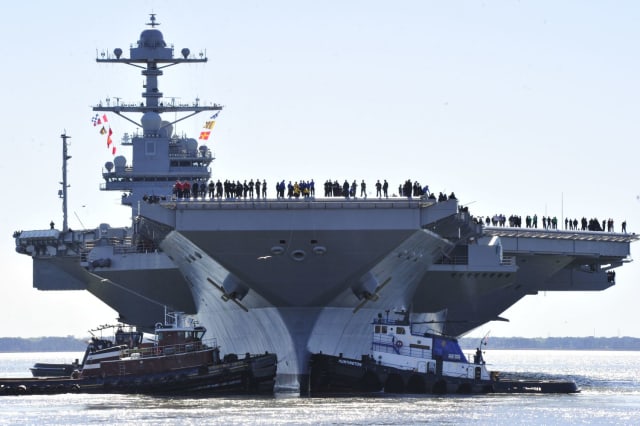
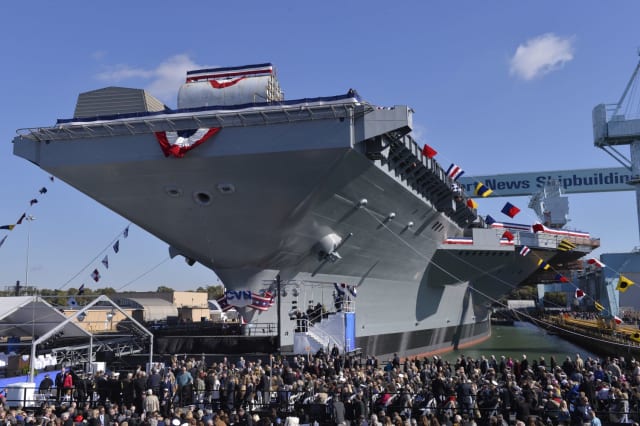 The
Saturday deployment of the USS Gerald R. Ford marks the first time in
42 years that the Navy has deployed a new class of aircraft carrier. The
last time such an event took place was in March 1975, when the USS
Nimitz took off to sea from the exact same pier for her sea trials.
The
Saturday deployment of the USS Gerald R. Ford marks the first time in
42 years that the Navy has deployed a new class of aircraft carrier. The
last time such an event took place was in March 1975, when the USS
Nimitz took off to sea from the exact same pier for her sea trials.
The USS Gerald R. Ford is the first in a new class of super-carriers that will eventually replace the Nimitz-class carriers which currently dominate the Navy fleet.
The USS Gerald R. Ford has finally taken to the sea after a series of costly and time-consuming setbacks. Here are five things you probably did not know about the aircraft carrier.
1
The numbers

© AFP
Building
the USS Gerald R. Ford was no small feat – in fact, it took 5,000
shipbuilders to get the job done, according to ABC News.
It also took 200,000 gallons of paint to cover the ship – enough to paint the White House 350 times.
The ship weighs 90,000 tons, equivalent to 400 Statues of Liberty.
It also took 200,000 gallons of paint to cover the ship – enough to paint the White House 350 times.
The ship weighs 90,000 tons, equivalent to 400 Statues of Liberty.
2
More than 1,000 sailors are on board

© AFP
The
ship is carrying more than 1,000 US Navy sailors, along with hundreds
of officials and workers from Naval Nuclear Reactors, Naval Sea Systems
Command, and Newport News Shipbuilding, according to the Navy Times.
More than 900 of the sailors on board moved onto the aircraft carrier in August 2015, to begin training and take the ship to sea. Despite the ship missing its projected deployment date of early 2016, those sailors have remained on board.
The ship will eventually hold approximately 4,500 sailors, around 700 less than a typical carrier, according to ABC News.
More than 900 of the sailors on board moved onto the aircraft carrier in August 2015, to begin training and take the ship to sea. Despite the ship missing its projected deployment date of early 2016, those sailors have remained on board.
The ship will eventually hold approximately 4,500 sailors, around 700 less than a typical carrier, according to ABC News.
3
First in a series of trials

© AFP
The
aircraft carrier departed from Huntington Ingalls Industries-Newport
News Shipbuilding in Newport News, Virginia, on Saturday. The ship is
currently undergoing builder’s trials, under which various systems and
technologies are being tested, according to AP.
The trials mark the first in a series of tests. Once the builder’s trials are completed, the aircraft carrier will return to port before embarking again for “acceptance trials,” which are conducted by Navy inspectors.
The trials mark the first in a series of tests. Once the builder’s trials are completed, the aircraft carrier will return to port before embarking again for “acceptance trials,” which are conducted by Navy inspectors.
4
Long & expensive journey

© AFP
Operation
of the USS Gerald R. Ford has been long-awaited. The planning and
construction phases began more than a decade ago, beginning with the
first contract award in May 2004. Steel was first cut in 2005, and a
keel-laying ceremony took place in November 2009, according to the Navy
Times. The aircraft carrier was first floated in October 2013, and was
christened by Susan Ford, the daughter of President Gerald R. Ford, in
November 2013.
Construction of the aircraft carrier was supposed to be completed by September 2015, but issues with its advanced systems and technology – including aircraft landing equipment and power generation – caused delays.
The ship’s delivery date has been pushed back multiple times. One of those delays took place last year, when its electricity-generating main turbines were found to have mechanical problems.
The delays also prompted budget overruns. The ship’s construction cost came in at a final total of $12.9 billion – a whopping $2.4 billion more than was estimated prior to its planned September 2015 completion date.
Construction of the aircraft carrier was supposed to be completed by September 2015, but issues with its advanced systems and technology – including aircraft landing equipment and power generation – caused delays.
The ship’s delivery date has been pushed back multiple times. One of those delays took place last year, when its electricity-generating main turbines were found to have mechanical problems.
The delays also prompted budget overruns. The ship’s construction cost came in at a final total of $12.9 billion – a whopping $2.4 billion more than was estimated prior to its planned September 2015 completion date.
5
It marks a milestone

© Global Look Press
The USS Gerald R. Ford is the first in a new class of super-carriers that will eventually replace the Nimitz-class carriers which currently dominate the Navy fleet.


The US Navy's future USS Gerald R. Ford (CVN 78) aircraft carrier vessel has started its first set of sea trials, known as Builder's sea trials.The carrier has set sail on its own power for the first time and will spend several days conducting builder's sea trials, which are carried out to provide an opportunity to test the ships systems, components and compartments at sea.
ReplyDelete